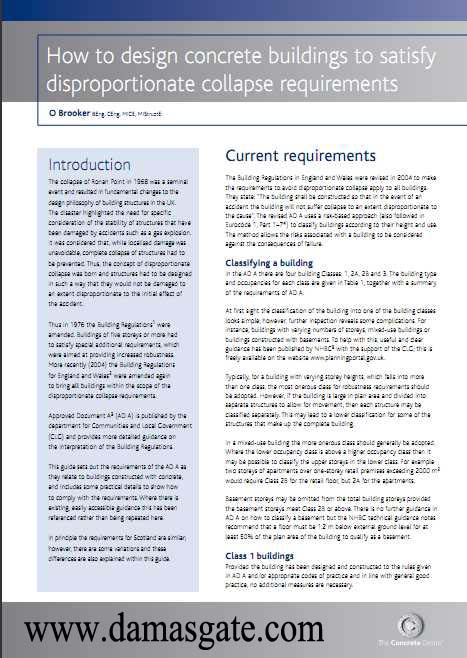How to Design Concrete Buildings to Satisfy Disproportionate Collapse Requirements
The collapse of Ronan Point in 1968 was a seminal event and resulted in fundamental changes to the design philosophy of building structures in the UK. The disaster highlighted the need for specific consideration of the stability of structures that have been damaged by accidents such as a gas explosion. It was considered that, while localised damage was unavoidable, complete collapse of structures had to be prevented. Thus, the concept of disproportionate collapse was born and structures had to be designed in such a way that they would not be damaged to an extent disproportionate to the initial effect of the accident.


Introduction
Thus in 1976 the Building Regulations
1
were amended. Buildings of five storeys or more had to satisfy special additional requirements, which were aimed at providing increased robustness. More recently (2004) the Building Regulations for England and Wales
2
were amended again to bring all buildings within the scope of the disproportionate collapse requirements.
Approved Document A
3
(AD A) is published by the department for Communities and Local Government (CLG) and provides more detailed guidance on the interpretation of the Building Regulations.
This guide sets out the requirements of the AD A as they relate to buildings constructed with concrete, and includes some practical details to show how to comply with the requirements. Where there is existing, easily accessible guidance this has been referenced rather than being repeated here.
In principle the requirements for Scotland are similar; however, there are some variations and these differences are also explained within this guide.
Download
http://s18.alxa.net/s18/srvs2/01/How...quirements.rar